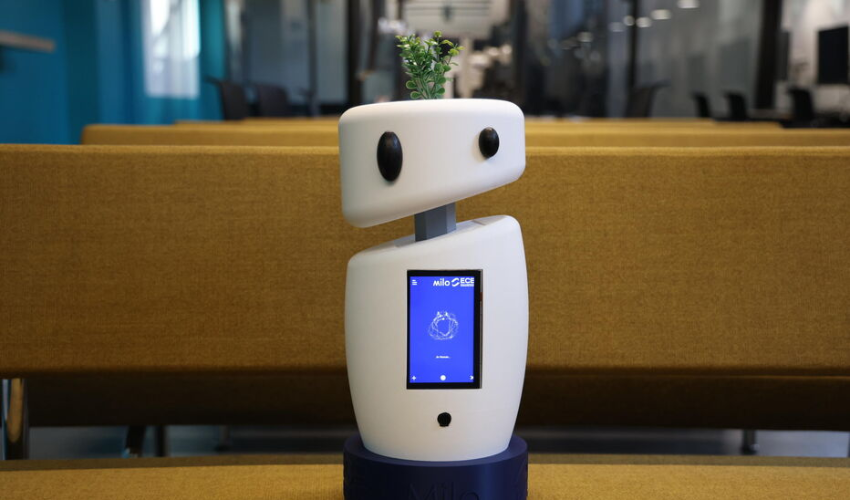Meet France’s Newest 3D Printed AI Student

Students at ECE (École centrale d’électronique) in France, a renowned engineering school specializing in artificial intelligence, were recently greeted by a new classmate. Her name is Milo, and she is the first autonomous AI student in the country. She can generate text, solve equations, interpret diagrams, and even interact with her fellow peers. What sets her apart in the world of emerging AI tools is not just her cognitive ability, but her physical presence, which was made possible in part through 3D printing technologies.
Over the summer semester, students in the university’s robotics club decided to go beyond Milo’s software interface and give her a body. They used a Bambu Lab X1 Carbon Combo 3D printer and created the chassis that now houses Milo’s screen interface, sensors, and a cute plant perched on her head. In just under three months, Milo went from just a concept to a fully embodied AI student; in part due to the speed and flexibility of additive manufacturing. This project demonstrates how 3D printing can serve as a rapid prototyping tool for robotics, helping to compress development times while maintaining in-house production.

Students were able to design a lightweight body for Milo in their robotics studio. (Photo Credit: Les Echos)
The Director of ECE Paris, François Stephan, said that Milo will serve as a bridge between students and faculty. He explained, “Milo will be a kind of mediator to increase pedagogy and the student experience.” Beyond just sitting in lectures, she will also be available through a mobile app. Milo will be able to advise students on their coursework, internships, and overall integration into campus life. Her overall role showcases the increasing overlap of AI systems and their physical embodiments made possible through additive technologies.
For the 3D printing community, Milo represents more than just a novelty. She points to a future in which AI-powered systems and printed components evolve together. Additive manufacturing provides the structural freedom to design lightweight, customized, and even organic-looking robot forms. AI also accelerates design optimization and user interaction. This creates a feedback loop where both technologies push each other forward. In the case of Milo, a sovereign and ethical AI developed in-house meets a body shaped layer by layer in the lab.

Milo currently attends lectures with students and learns alongside them in the classroom. (Photo Credit: BFMTV)
While Milo is still under development, and sometimes has slow response time and occasional glitches, this project at ECE underscores a critical direction for the future of engineering. AI is set to transform industries from manufacturing to medicine, and 3D printing will be one of the key tools helping to enable that transformation to take shape. For the students at ECE Paris, Milo is not just a classmate, but also a glimpse into the future of the technology they seek to master.
What do you think about Milo? Let us know in a comment below or on our LinkedIn or Facebook pages! Plus, don’t forget to sign up for our free weekly Newsletter to get the latest 3D printing news straight to your inbox. You can also find all our videos on our YouTube channel.
*Cover Photo Credit: Le Parisien






